Reading for a long time no TV like the Sony Z9D is so sensational when it comes to the market: In addition to the domestic front-line actor Hu Ge's endorsement, this integrated Sony in the LCD field of all kinds of black technology in one TV, the lowest 3.3W yuan listing The price also makes many people lament their wallet powerless. But do you know? In the Sony product lineup, "Z" has always existed as a super flagship (the TV that was last named after Z was still a 2009 event), so don't worry about the price... Z9D What kind of strength performance? Please look at NetEase's current home appliance evaluation attitude.
Minimalist & Understated Industrial Design Review Attitude No. 81: Sony Z9D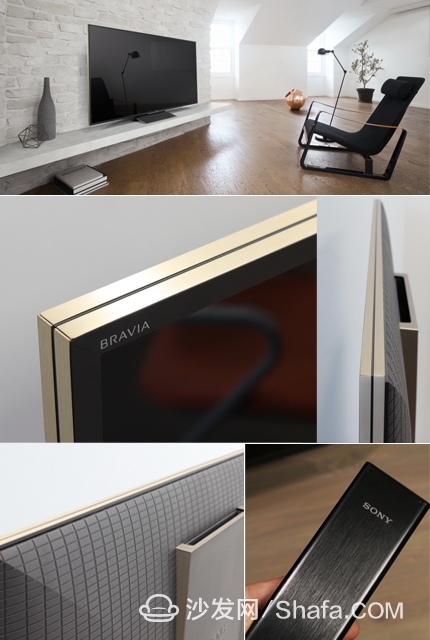
To be honest, the appearance of the Z9D is not a publicity. If it is not specifically stated, people who see it at first glance may not feel that it is a super flagship product that is positioned much higher than an ordinary TV. Because it doesn't have the elegance of curved lines on curved TVs, or the super-thin thickness of OLED TVs. Regardless of the width of the frame, the thickness of the screen, or even the style of the base, the Z9D can be said to be very simple, and there is no such feeling that people will feel suddenly bright. Said a real thing, a few days ago I went to the appliance store, into the Sony counter, after 30 seconds simply did not find which is the Z9D!
However, this does not mean that the Z9D is a product that does not pay much attention to design but only sells high prices based on image quality and sentiment.
Under the low-key and extremely simple appearance of the Z9D, it is the pursuit of various materials and processing techniques. For example, in its border part, in addition to using more textured metal, it also uses a golden color scheme that Sony rarely uses on television sets, revealing a hint of luxury in the main colors of dark gray. As for the appearance of the Z9D, what kind of process, what kind of material, and how many processes are used to create them, according to Sony's consistent style is not to be advocated to the outside world (if it is replaced with an Internet brand, most consumers will Has been brainwashed by various new terms, so we only need to feel through sight and touch. A good product can speak for itself.
At the same time, we can also find some very classic, Sony BRAVIA family elements under the minimalist look of the Z9D. For example, breathing lights that have never changed, suspensive pedestals, and even some old-fashioned multi-key remotes... all of these allow Sony’s old users to find the familiar feeling in the first place. Users also have the opportunity to experience the heritage of Sony's industrial design.
Sony's top flagship 4K HDR TV Z9D
Appearance & Details

The appearance of the Z9D is not unassuming. As a super flagship, it even looks a bit low-key.

However, it devoted enough effort to the details, including the design of the backboard, full of artistic sense. 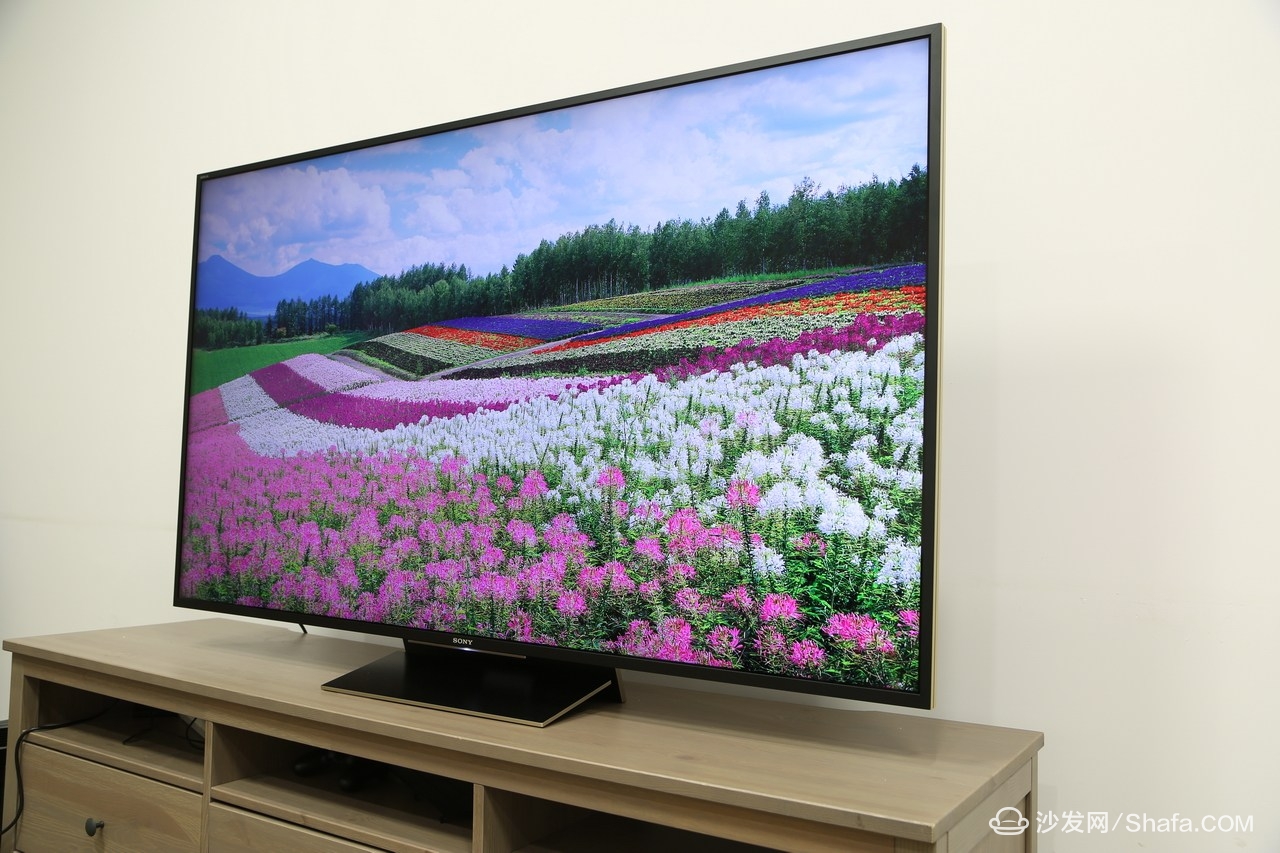
The 65-inch and 75-inch Z9D looks very much like the previous high-end model X9300D. The 100-inch specification has a completely different appearance due to its large size.

The Z9D uses a BacklightMaster Drive (Dynamic Backlight System - Master Edition) backlight, resulting in a thicker body than a typical LED TV, but even so, the ingeniously designed frame does not make people feel too heavy.
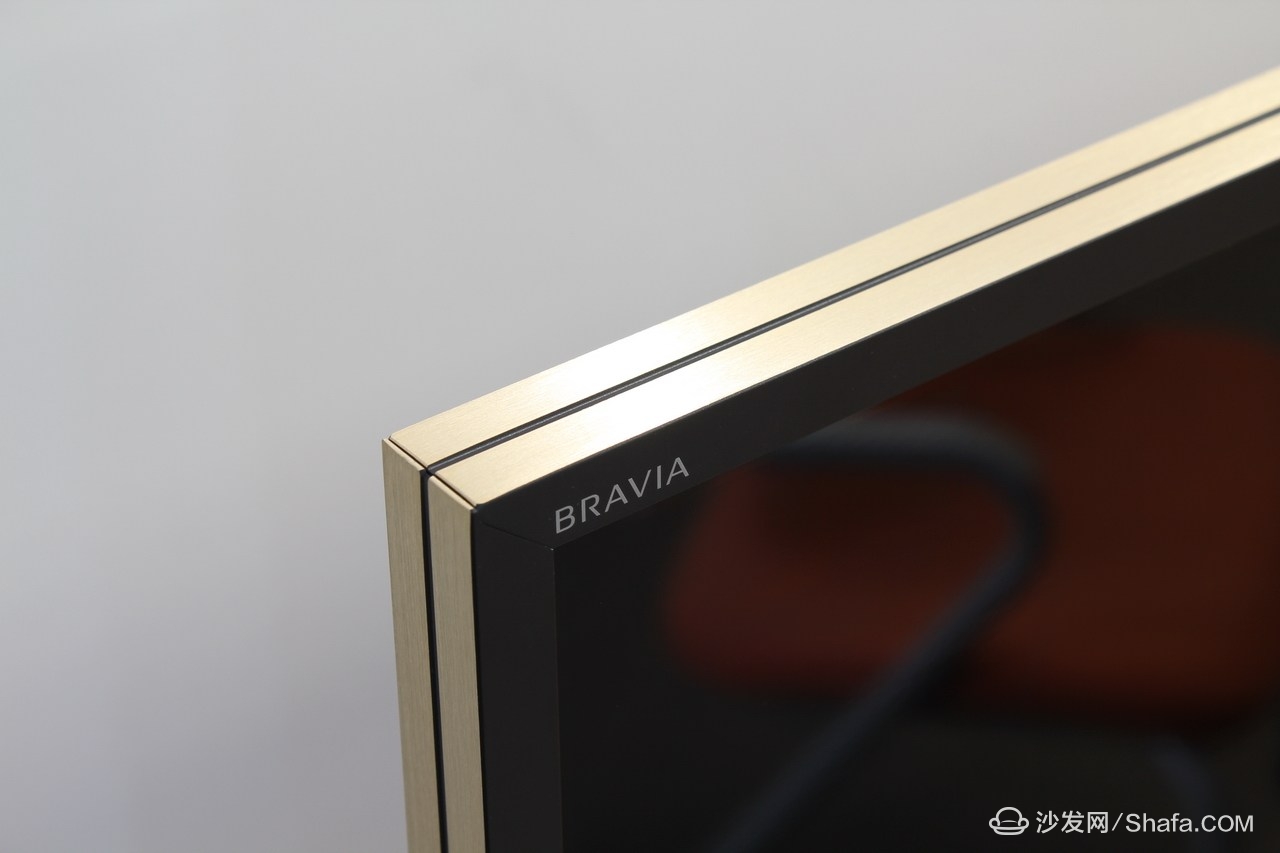
The Z9D's frame has changed Sony's past styles, using the "local gold" that is known for its gas field. However, the meticulous craftsmanship and texture-rich materials have not been abandoned and have been completely preserved.

This black decorative line in the center of the frame is the finishing touch. Without it it is conceivable that even if the texture of the frame is prominent, it will make people feel mediocre and monotonous.

The golden border with a large area of ​​black and gray main colors is still quite classic.
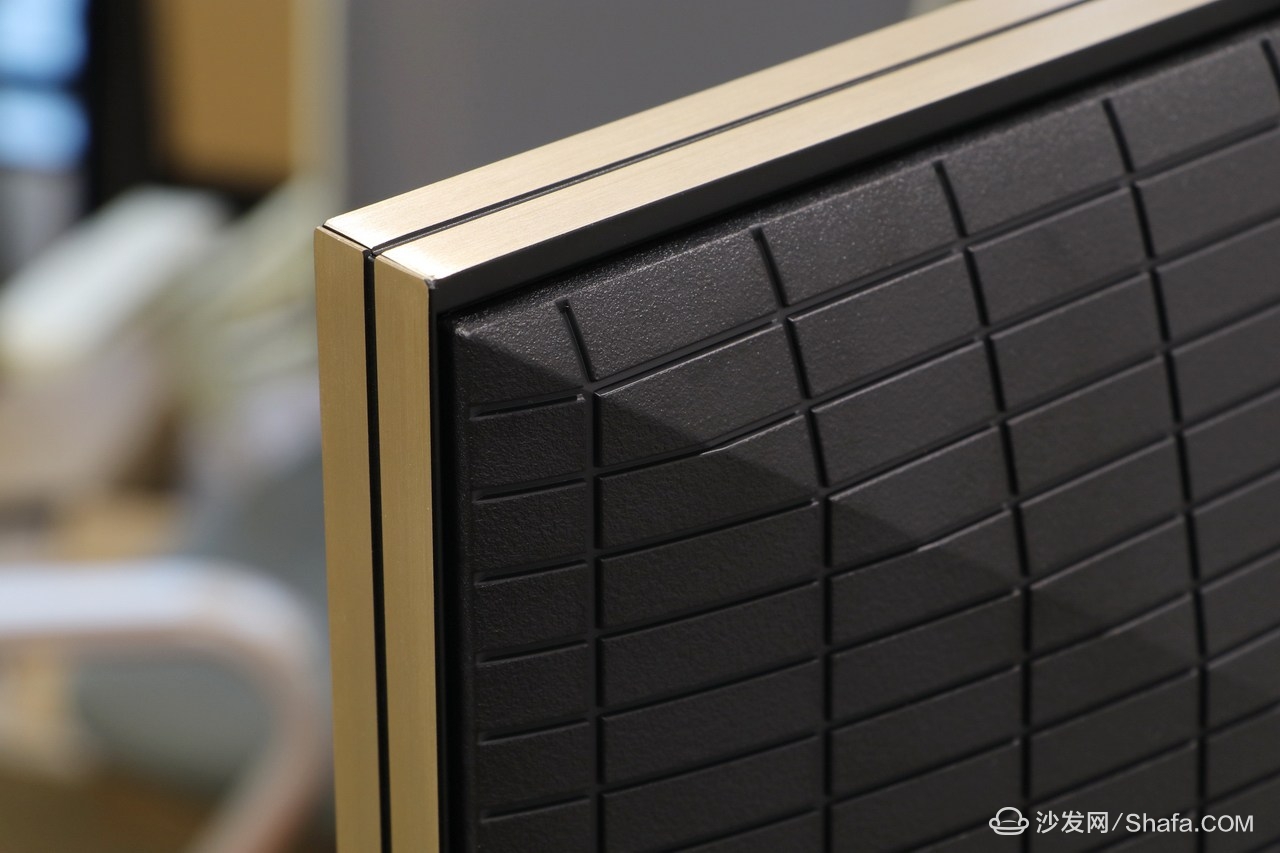
As for what kind of craftsmanship, what kind of materials, how many processes to create them, according to Sony's consistent style will not be preached to the outside world.

Although the overall style is relatively low-key, the golden frame always gives people some visual stimulation and brings some extravagant feelings.

The style of the base is relatively traditional, but the choice of material is not sloppy, and the black metal brushed texture is very delicate and delicate.
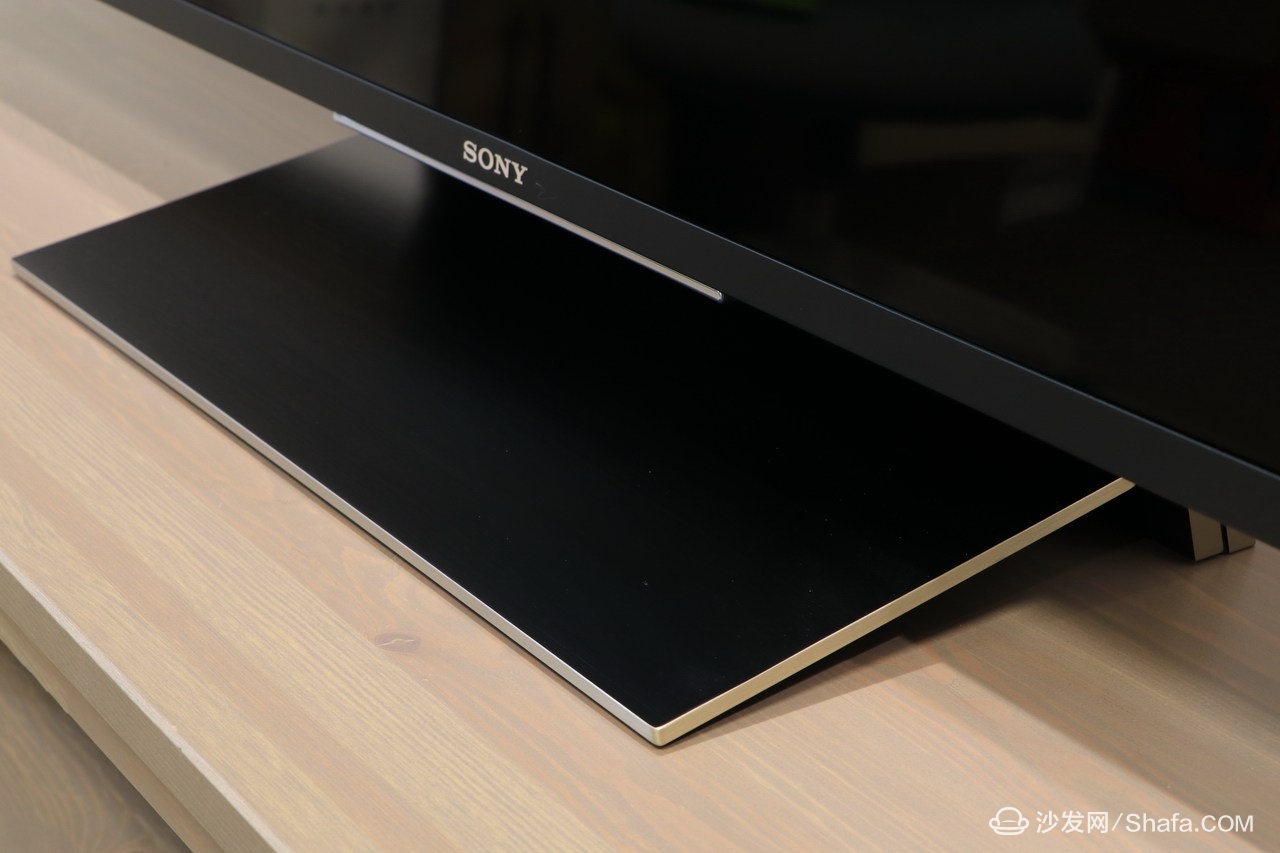
Another purpose of this practical base is also to provide a stable support for heavy screen parts. Due to the adoption of a new backlight system, the weight of the Z9D is far more than that of a normal LCD TV.

Z9D body details

Z9D body details, back of the base close-up.

The terminal area on the back of the fuselage even has a protective cover, and all the cables can be concealed. The designer must be a Virgo.
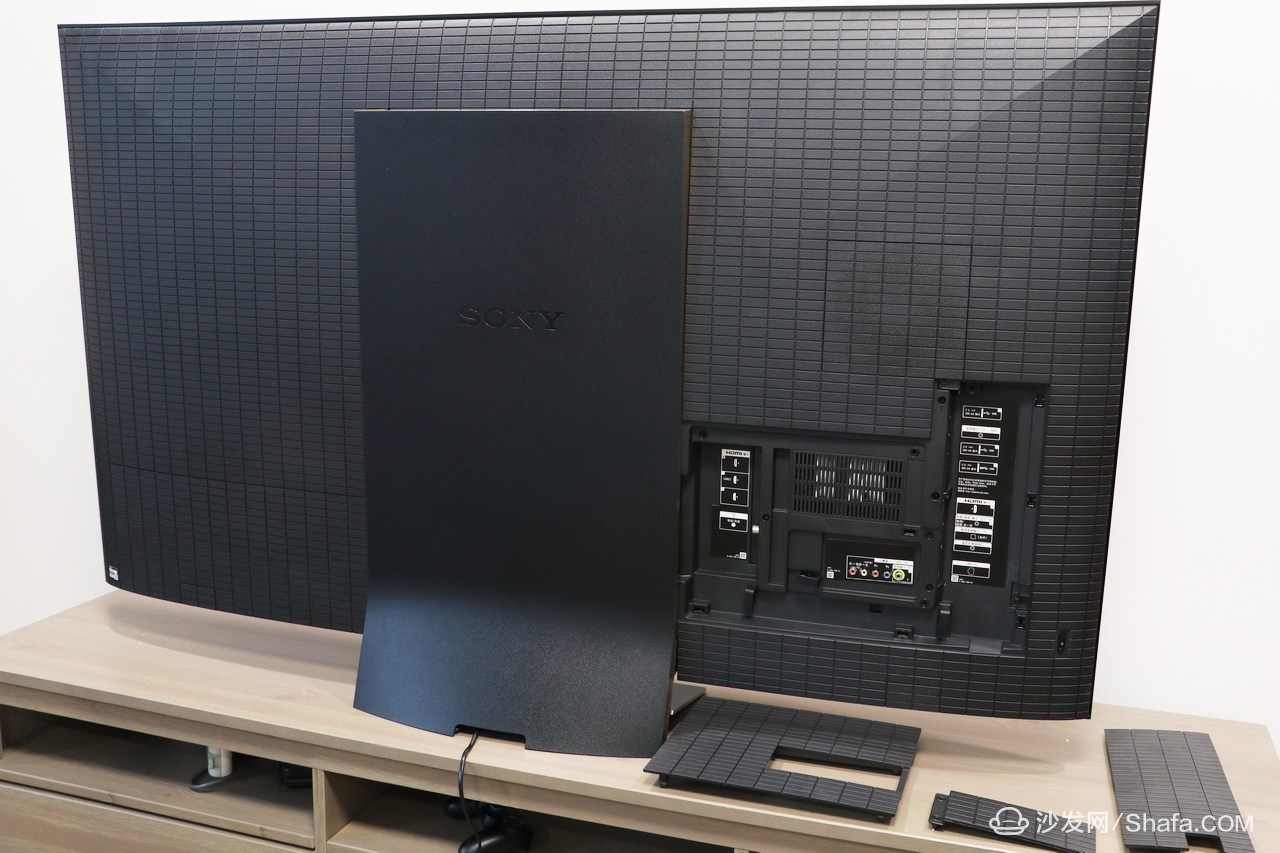
The terminal area has even been designed with 3 cover plates, allowing the user to choose the minimum degree of exposure according to his own situation.

The outlet of the cable is cleverly designed on the back side of the base.
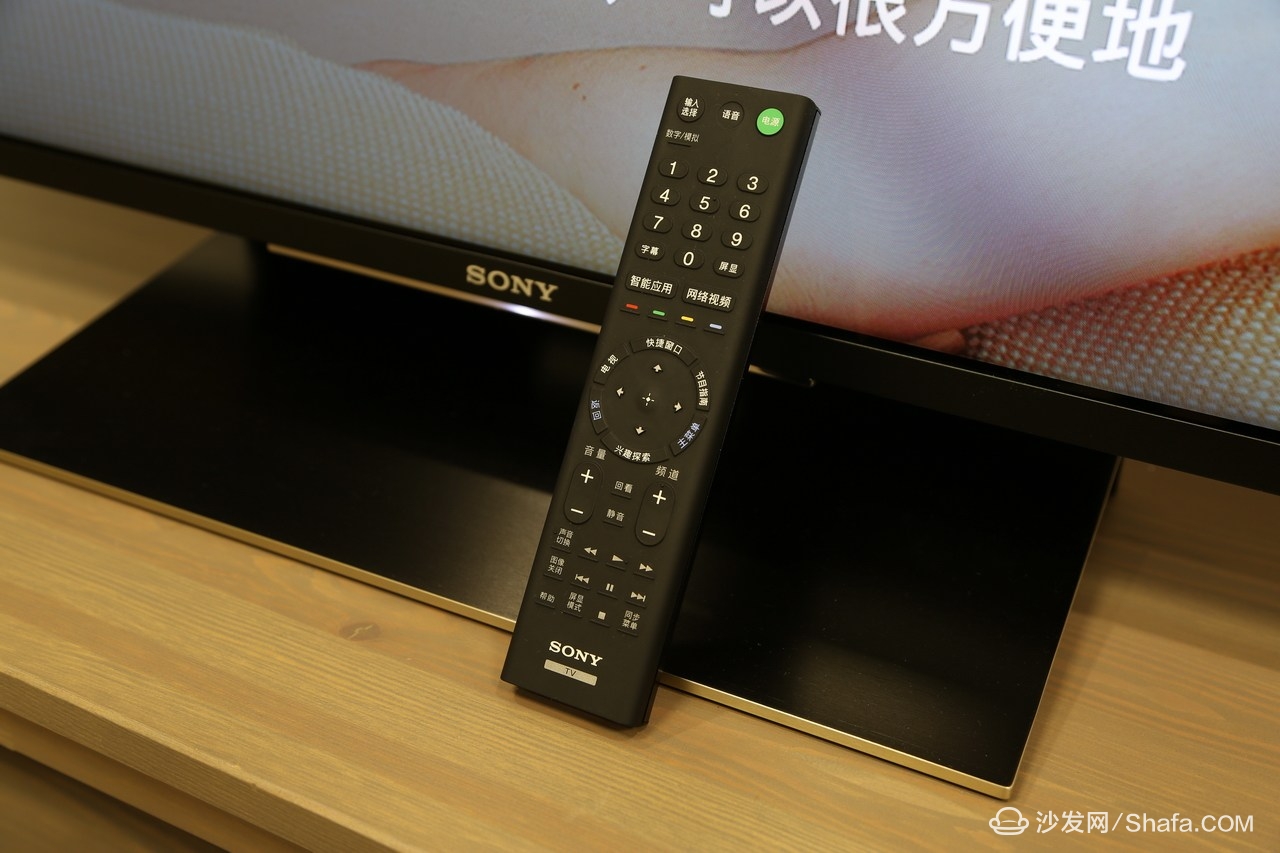
The Z9D's remote controller is not specifically customized, and is consistent with the high-end model X9300D X9400D.
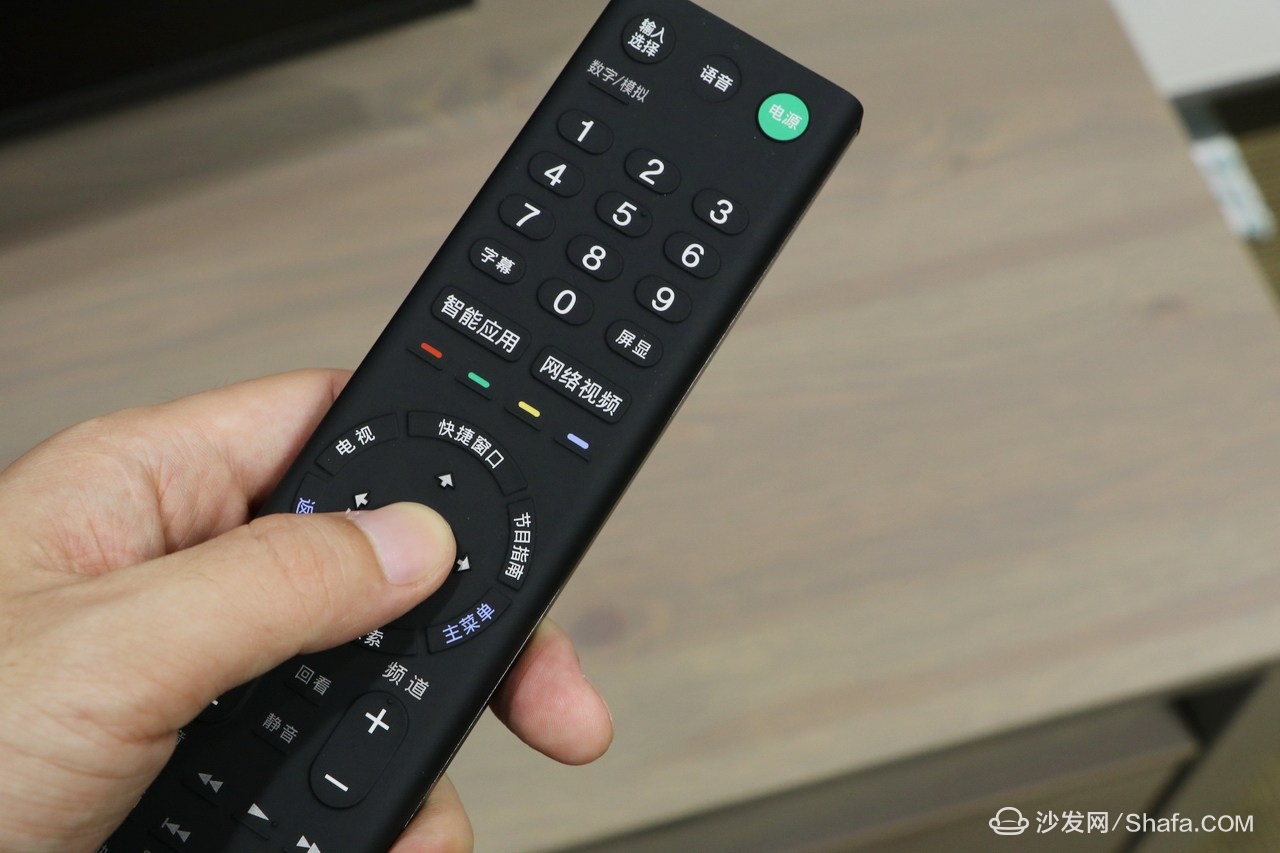
And still is Sony's classic modeling remote control, but the cross navigation area becomes micro-keys, feel more clear and direct.
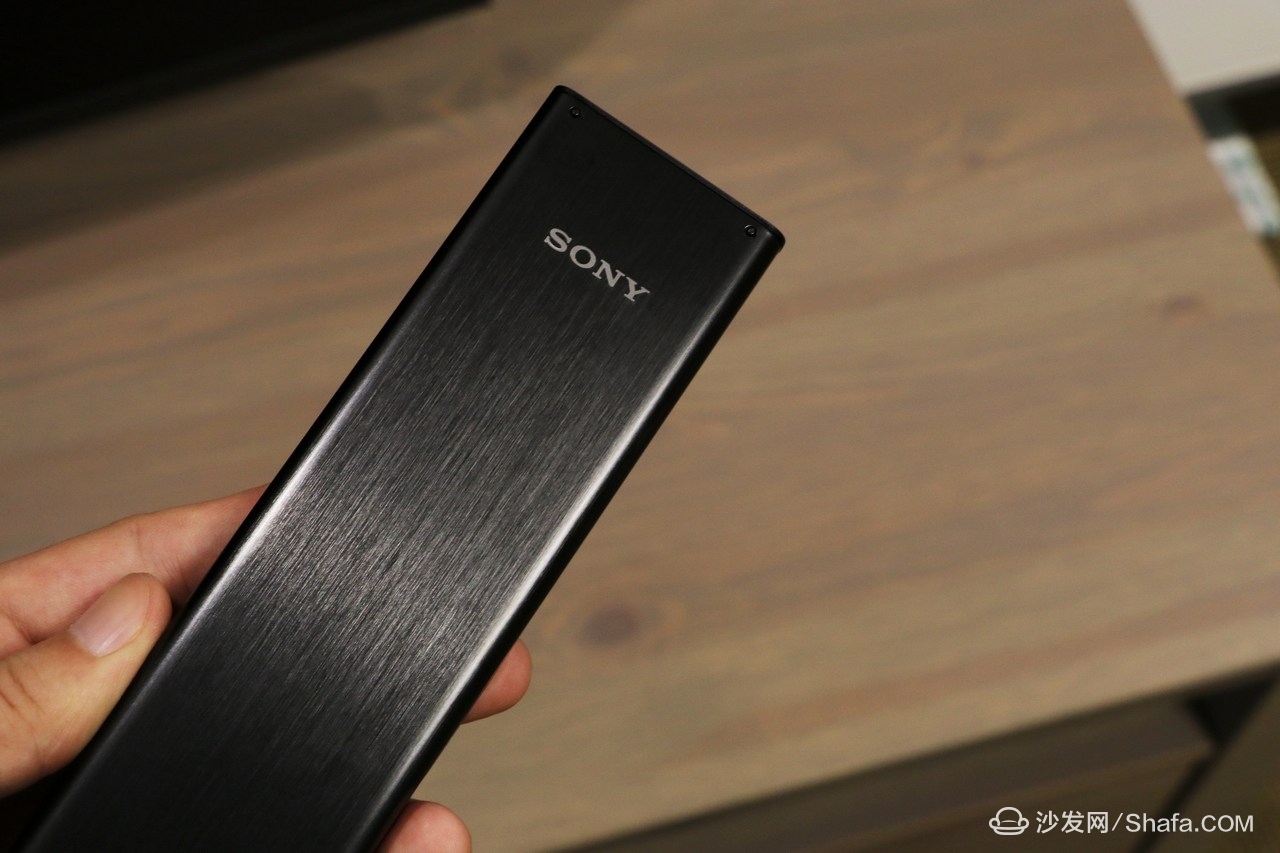
The back of the remote control material and the main material of the body echo one another.

Don't be fooled by the Z9D's unobtrusive appearance, because many of the dark technologies are hidden within its seemingly simple appearance. Let's continue reading.
Black technology must mention: BacklightMaster Drive
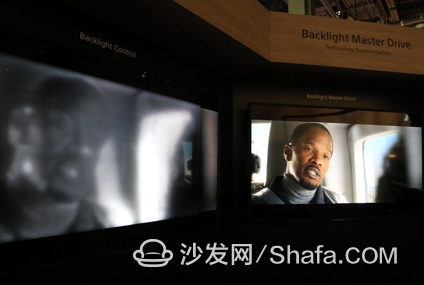
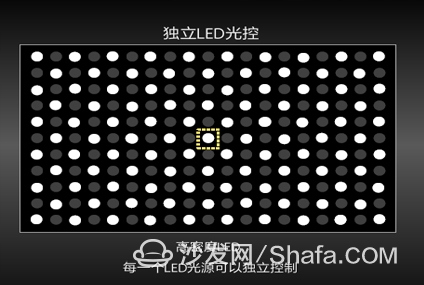
Although the word “black technology†has recently been overused, after thinking about it, it still feels that only using the term “black technology†can most accurately express my understanding of it.
First of all, the biggest breakthrough in the hardware part of the Z9D is the transformation of the LCD's key backlight structure: the new "Backlight Master Drive". The strength of this backlight is: 1, the use of ultra-high density direct matrix LED backlight (although in the end how many LED particles Sony does not explain, but from its performance will never be a small number, behind (There will be evidence); 2, it can achieve independent brightness and brightness control for each LED particle, and is based on real-time video signal control; 3, in order to prevent the light interference between the LED particles, specifically designed a The bundled structure allows each LED's light to shine only in the corresponding area.
Recalling the history of the development of LCD TVs, there have been products that have adopted direct-lit LED backlights, all of which have become a classic. However, in the traditional direct-type LED layout, in addition to the small number of LED particles, and due to the limitations of the backlight drive technology, the so-called dynamic backlight control can only be divided into a number of small areas in accordance with a certain area of ​​the backlight control, ranging from a few, if It is already possible to achieve dozens or even hundreds of districts, and the Z9D can do it. In the past, no opponent has ever appeared.
I had seen the power of Dynamic Backlight System - Master Edition at CES this year: At that time, Sony placed two master LCDs with dynamic backlight system side by side, but one of them removed the liquid crystal layer, leaving only the backlight system. In this way, people can intuitively see the working status of the backlight when the television is displaying various screens. The effect is indeed very shocking, because it looks like watching a black and white TV screen with a slightly lower resolution, and the accuracy of its backlight is evident. And another advantage of this high-density LED layout is that it allows brighter parts of the image to achieve higher brightness, which is why the Z9D's HDR performance far exceeds the average HDR TV.


In addition to the extremely precise and subtle control of the backlight area, this new backlighting system also allows the Z9D to have a brighter and lighter brightness reproduction range that surpasses that of ordinary HDR televisions. In fact, at the time of demonstrating the "BacklightMaster Drive" technology prototype at CES, Sony said that it was already possible to achieve screen brightness of up to 4,000 nits (although the highest-end HDR TV on the market is currently available.) 1000 nits peak brightness already belongs to high-performance models). Although Sony has not yet announced the Z9D's highest brightness index, it is certainly beyond the mainstream HDR TV. The Z9D has a display capability that is closer to the real-world brightness range at the physical level, which is also hard to reach for so-called HDR TVs that only process HDR signals.
Three new feature-capable X1 Extreme chips
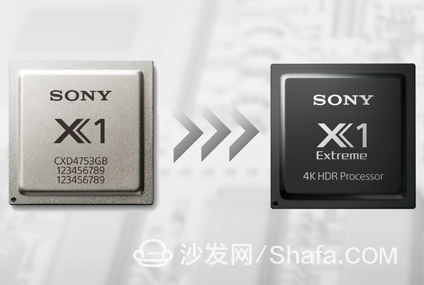
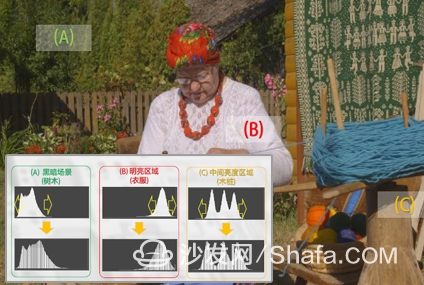
Another comparison of the Z9D has been neglected, but the technology that plays a role in no less than the importance of the backlight system is the integration of the three new technologies of “HDR dynamic item-by-item remodeling technology, dual image database, and SuperBitMapping 4K HDRâ€. "4K HDR image processing engine".
First of all, let's talk about the real thing of this image engine in the physical layer, which is the X1 Extreme chip. Unlike other color TV manufacturers' X-core CPUs and nuclear GPUs, the X1 Extreme is a chip that is completely used for image quality processing, and has nothing to do with those running points. This chip is entirely owned by Sony itself and is neither sold nor authorized. We only know that its computing power is 1.4 times that of current X1 chips used in high-end machines.
X1 Extreme's computing power is not used to run points. It is entirely for processing images. Therefore, it can achieve frame-by-frame processing of 4K resolution video signals.
The first new technology: "HDR dynamic item-by-item reshaping technology" can detect and analyze each object in the frame frame by frame and give the best optimization algorithm. After optimizing the details in each frame of the image, the image engine performs HDR shading adjustment according to the overall contrast of the frame. After two rounds of optimized remodeling, the image shows not only the light and darkness of the detail part is more true, but also can show more excellent light and shadow effects and contrast of light and shade, gradual change of light intensity and even halo performance at the overall macro level. It is difficult to achieve on ordinary HDR TV.
The second new technology "Dual Image Database" is one of the souls of Sony's image processing technology and is mainly used for noise reduction. Compared with Sony's past noise reduction technology, this technology can realize the recognition of different elements in the image such as foreground and background, and compares and reduces noise through a huge image database. In fact, on the Z9D launch event, many people have seen the difference between the noise reduction effects of the ZQD and the mainstream QD TVs and OLED TVs on the market. The effect even exceeds the OLED TVs known for their darkness. The reason is that OLED TVs are In the absence of high-performance noise reduction processing technology, it is easy to display noise as a video signal, which affects the performance of the dark part.
The third new technology is a 4K HDR 14-bit smooth gradient. Many people have had the experience of seeing a noticeable color gamut on the screen of a television screen. The main reason is not that the color expression of the screen is not enough, but the lack of color management capabilities behind it. The 4K HDR 14-bit Smooth Gradient Technology analyzes the image frame by frame and performs 14-bit smoothing of the image to fully optimize the gradation and achieve a lower gradation, which means a more natural color transition.
Z9D picture quality performance test

The Z9D does not advertise the use of quantum dots, but this does not mean that its color is not as good as quantum dots. The new backlight system achieves a wider range of brightness reproduction, which means that the Z9D's true color reproduction will also be enhanced: because the same color gives us a different subjective experience at different brightness levels, the brightness reproduction range The bigger the color, the better the trueness and accuracy.

Z9D can reproduce very subtle color changes, while the color style is very real, there will be no intention to enhance the sense of saturation

Subtle changes in light and shade can be accurately reproduced.

Subtle changes in light and shade can be accurately reproduced.

Subtle changes in light and color, combined with a high-performance image engine, make it possible to see very clear details even when viewing the picture at close range, and the three-dimensionality of the picture is also very strong.
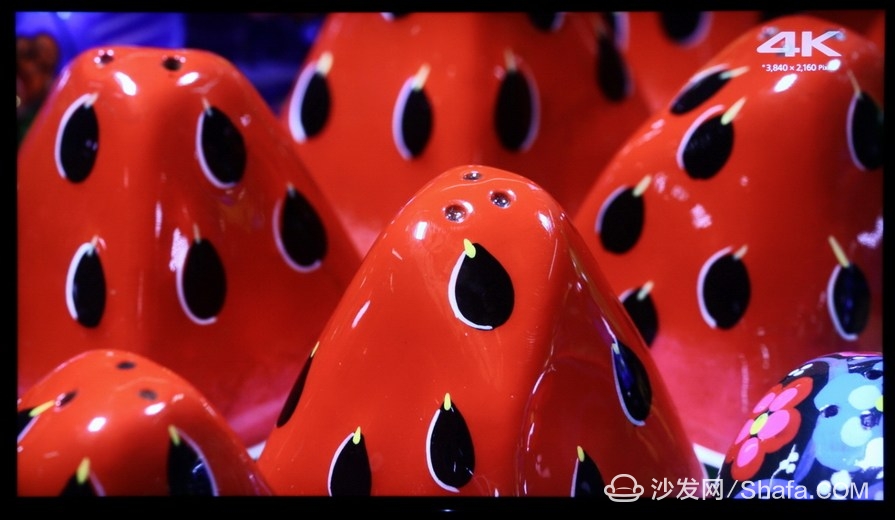
In addition to the powerful noise reduction capability of the new image engine, the 14-bit smoothing process also makes the color transition extremely smooth.

Color changes, transitions, and details of the details are excellent.

The Z9D's image engine intelligently analyzes the details of each frame in the image. After HDR optimization of the details, HDR optimization is performed from the global level. Therefore, the final screen effect does not appear to be distorted because the details are too prominent. problem.
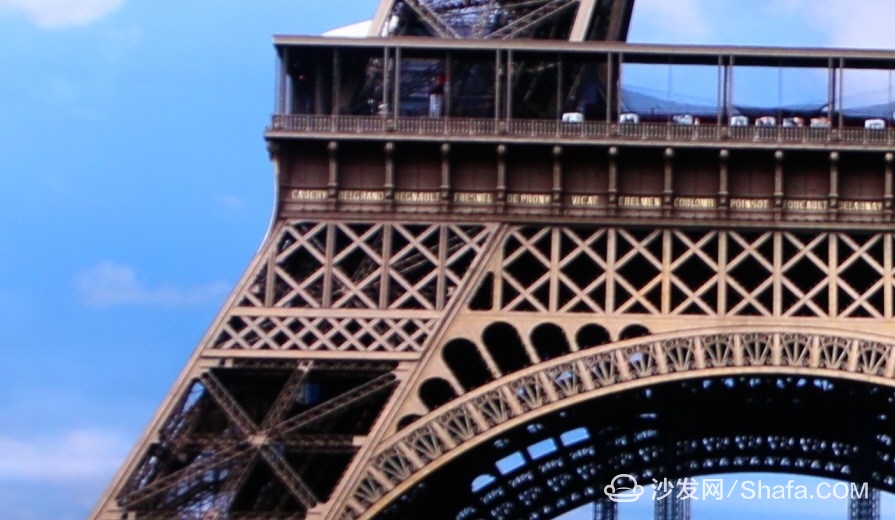
Pay attention to the sharpness of the detail lines and the level reproduction of the dark parts of the details. This is the effect seen 20 cm from the screen.

The Z9D's image engine intelligently analyzes the details of each frame in the image. After HDR optimization of the details, HDR optimization is performed from the global level. Therefore, the final screen effect does not appear to be distorted because the details are too prominent. problem.

Pay attention to the sharpness and color change of the dog's hair edge. Note that this is an effect seen only 20 cm away from the screen.
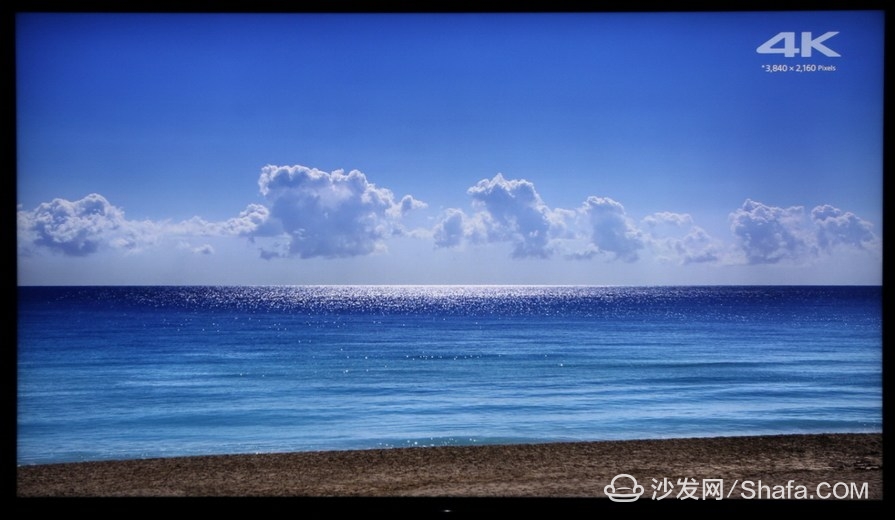
Sony has not announced the Z9D's peak brightness yet, but at CES2016, Sony has stated that "BacklightMaster Drive (Dynamic Backlight System - Master Edition)" can achieve brightness of up to 4000 nits.
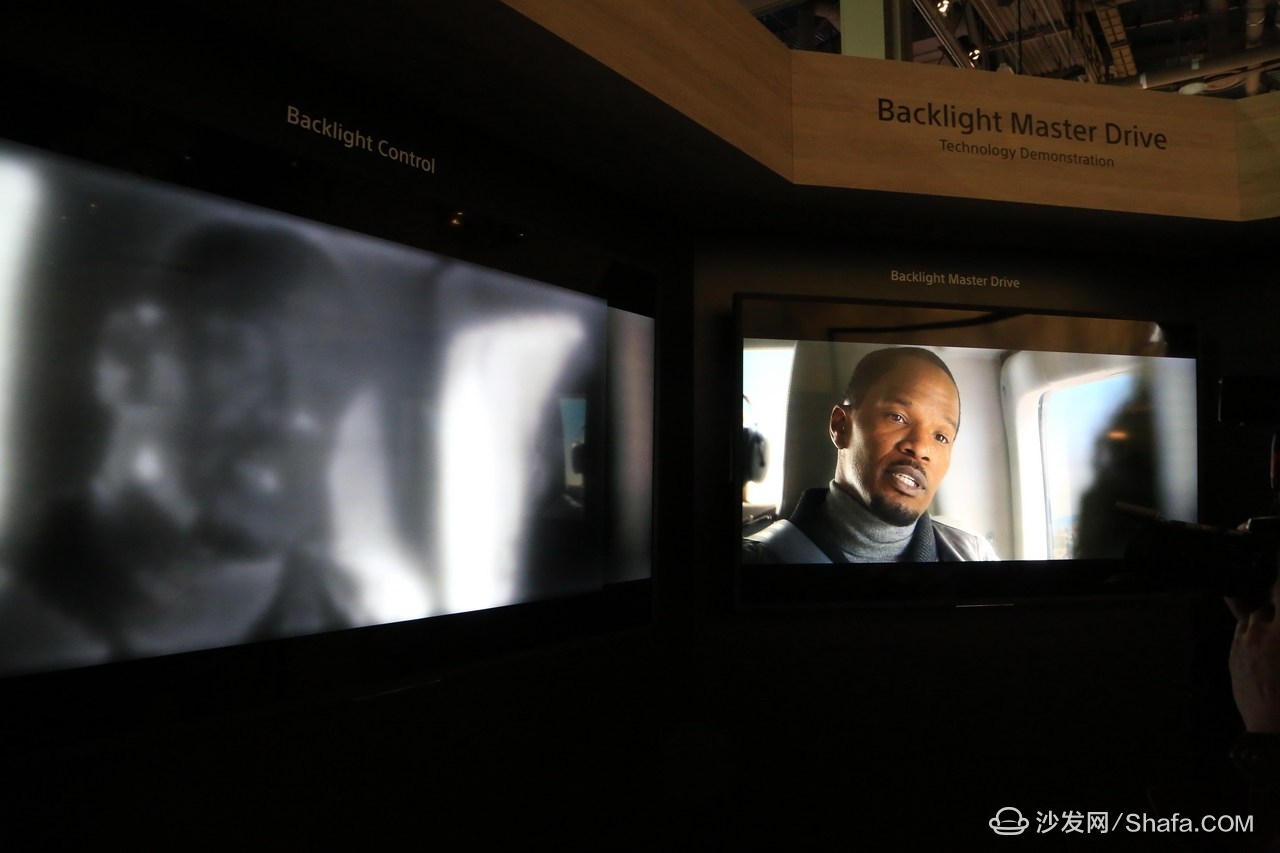
This is the scene at the CES 2016 when Sony demonstrated "BacklightMaster Drive (Master Edition)". You can see how its backlighting system works, and also how dense the LED particles are. Is a small black and white LED display.

In addition, because the LED density is very high, when a bright part is displayed, multiple LEDs can emit light in a concentrated manner to achieve a high brightness performance in a very small area.

Since the LEDs are densely arranged right behind the liquid crystal panel layer, such a highly precise area control can be realized.

Therefore, the problem of leakage of light and black on pure LCD TVs is not pure or profound. It is not a problem on the Z9D. Even if the screen has both bright and dark parts, no interference will occur.

This is a side view that we often use to test backlight uniformity and light leakage. The actual Z9D picture we see is exactly the same as the screen shot result. In addition to the weak LOGO breathing light just below, the area outside the white font is black.

The black level test chart, Z9D perfect reproduction of the tiny color change.

In the same way, the white part color scale is also a perfect reproduction. This kind of performance usually only appears on active light display devices.

Let's take a look at some video observations with high contrast. This is a global screen shot. Since the brightness and darkness in the screen are very large, the general camera cannot capture real effects from the global level. Therefore, this screen shot is not the actual performance of the Z9D. We only use it. It refers to the location of the detailed effect below.

In the neon part, the actual display effect of the Z9D is this.

The darkest part on the right can actually see a lot of detail.

Change to another section with a highly bright area and notice the left area on the screen shot

In fact, you can see that the highlights have not lost any details, and the color changes are also great

When there are large bright areas and large dark areas at the same time, the Z9D still restores all parts of the image. Also due to camera latitude problems, this global screen shot is only used as a reference for the following detail position.
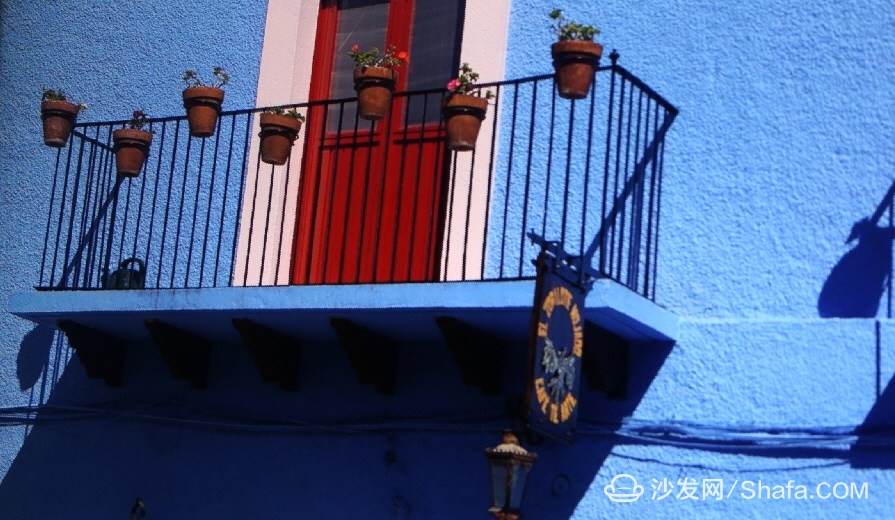
The details of the bright part, the texture of the wall is clear and three-dimensional, which is the effect of viewing with the naked eye 20 cm away from the screen.
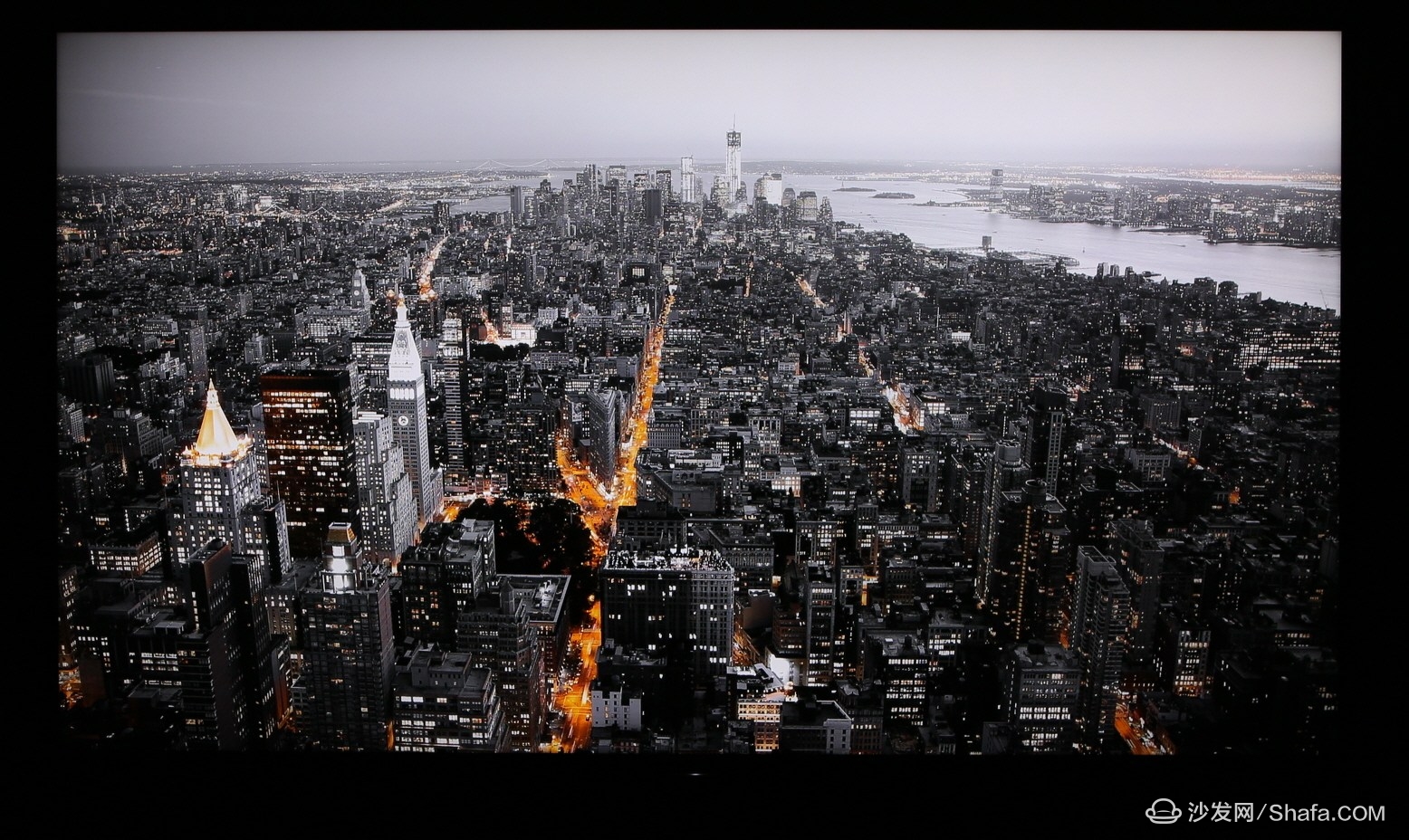
Personally think that the Z9D has some visual impact that other TVs can hardly compare when displaying some black-and-white images. The effect of detailed light and shadow changes is unforgettable.

However, the Z9D's image always gives people a very real feeling, even if there are some bright color blocks in the picture, but it will not make people feel over-exaggerated sense of intent.
The peak brightness of the Z9D is still a mystery, but this does not prevent it from having an excellent ultra-high brightness reproduction range.
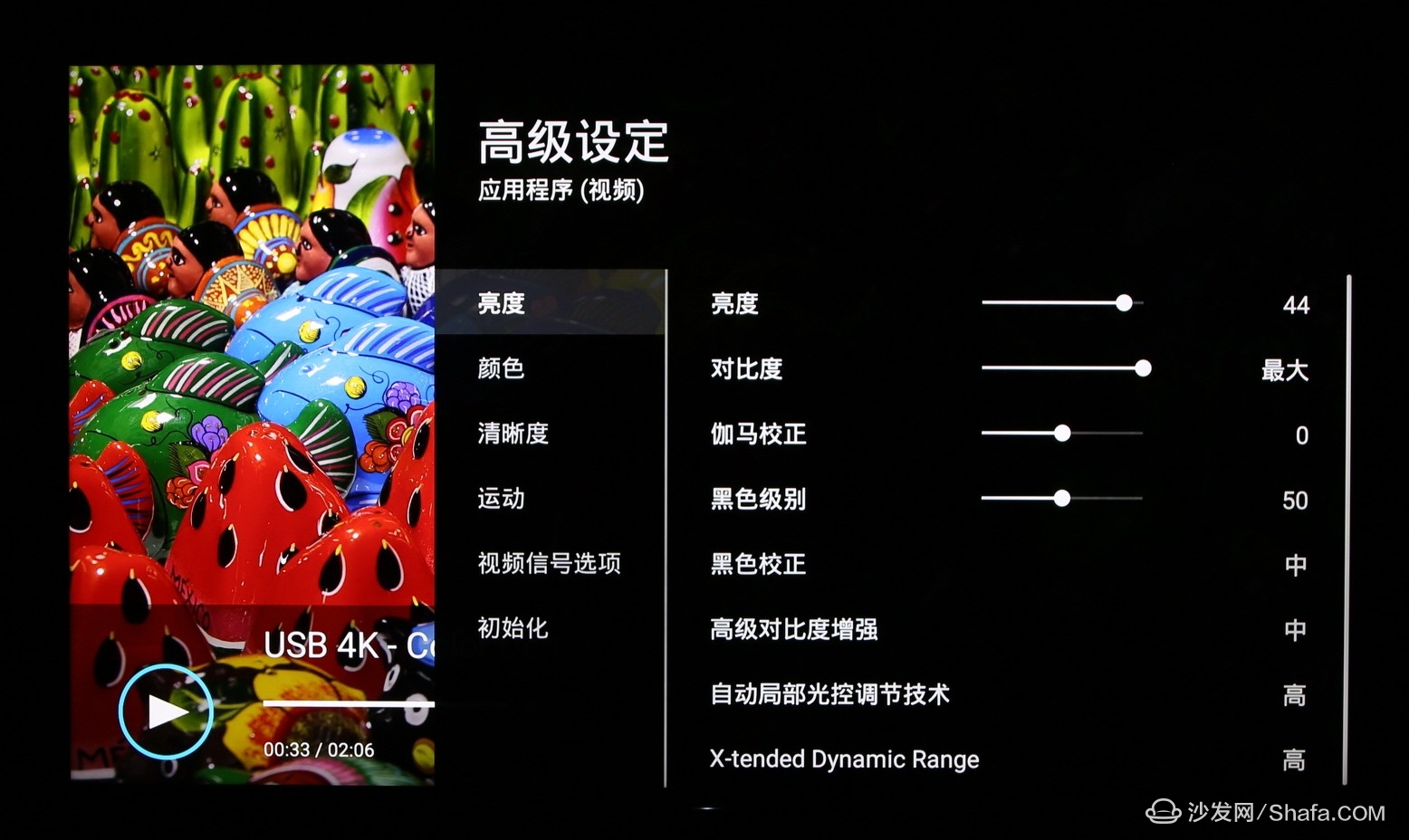
Another major feature of Sony TVs is the extremely freedom of manual tuning. The Z9D also retains this tradition. Color, light, darkness, clarity... The audio space for audiophiles and HD enthusiasts is very large.
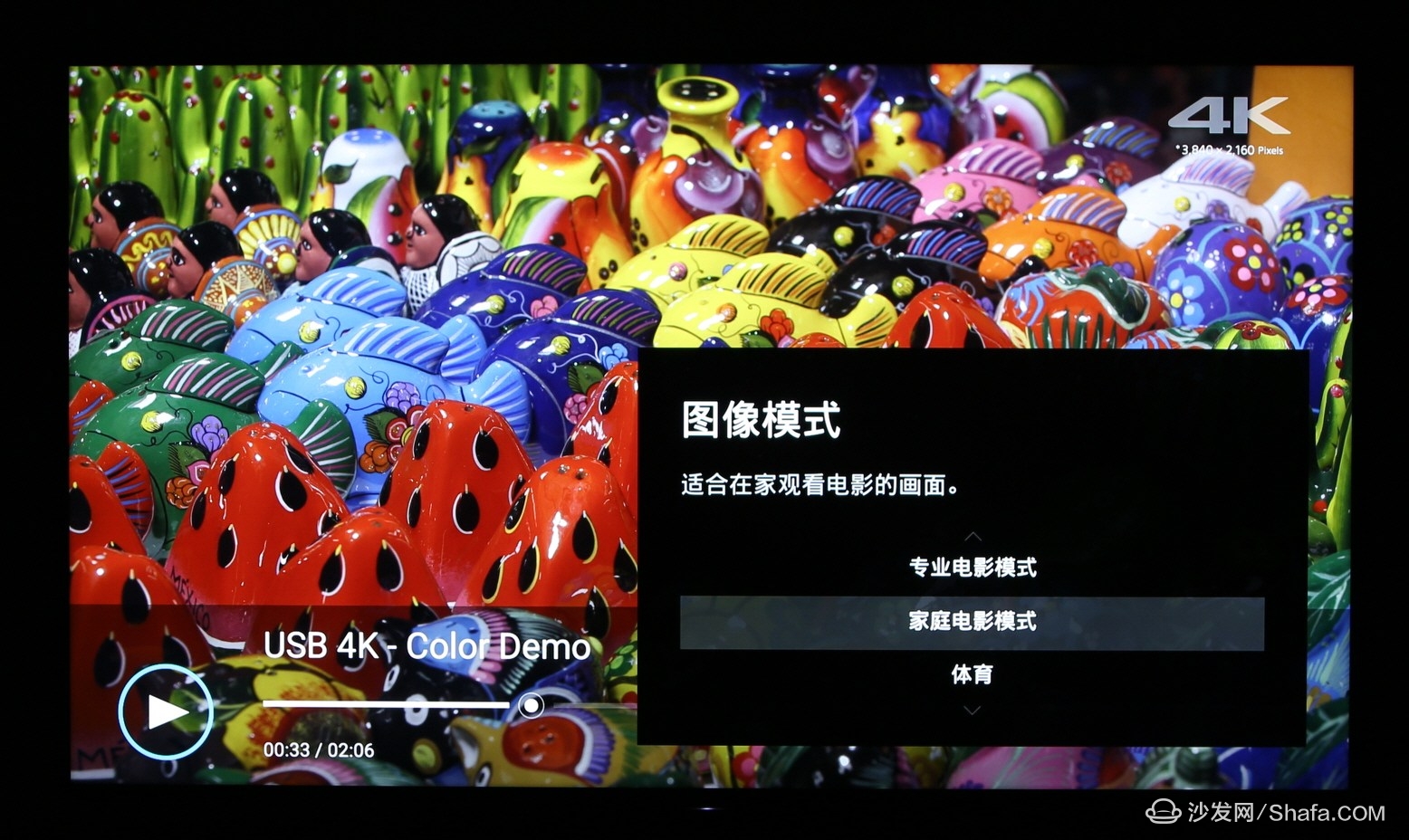
For ordinary users, the Z9D's preset multiple image modes are also far more common than ordinary televisions, including professional theater modes and general home theater modes, which are not present on conventional televisions.

These image modes after being tuned by professional video engineers are also the essence of Sony TVs. Don't miss it.
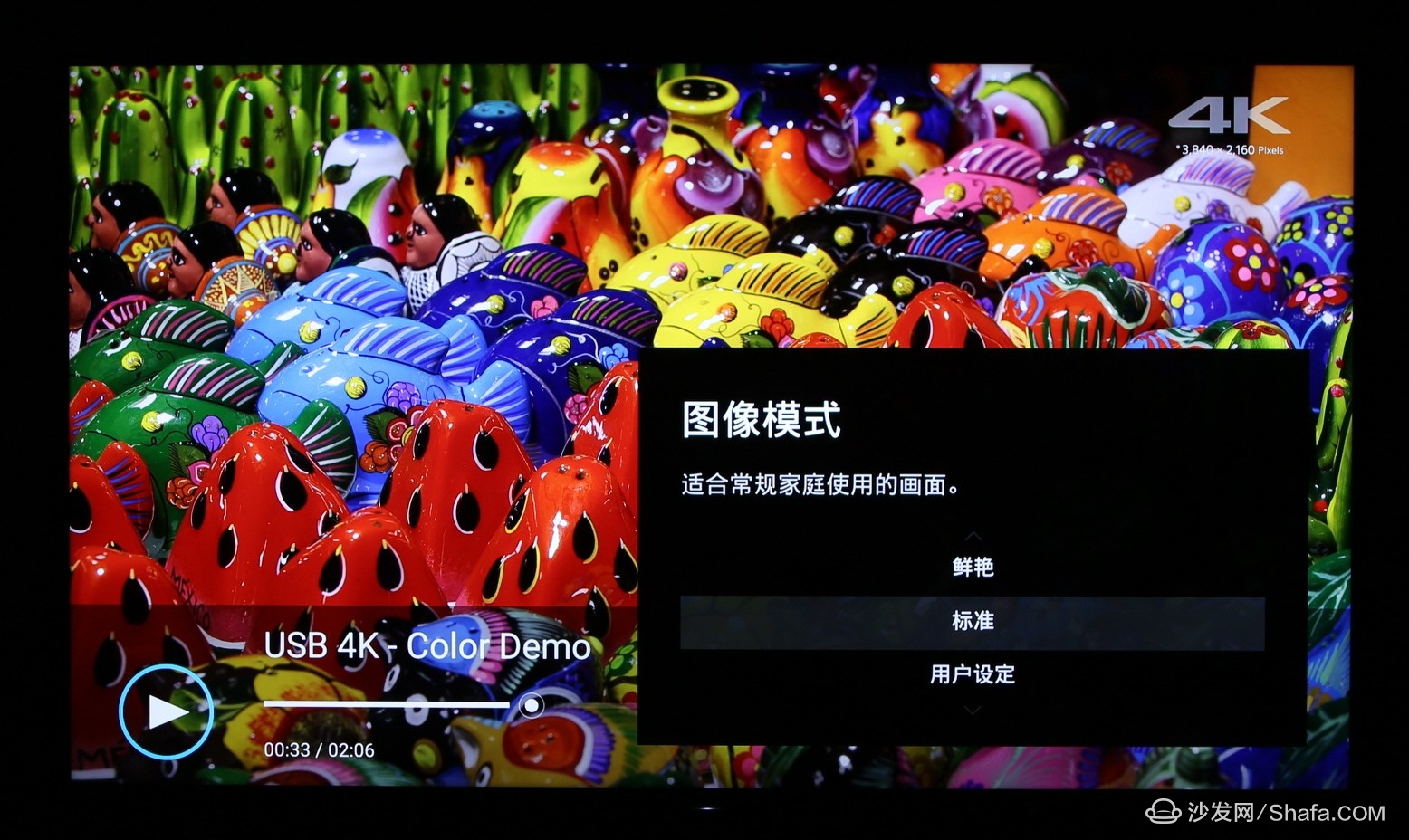
Our tests this time are based on the default standard image mode.
Even in the bright mode, the Z9D will not be as saturated or overly saturated as the average TV set.
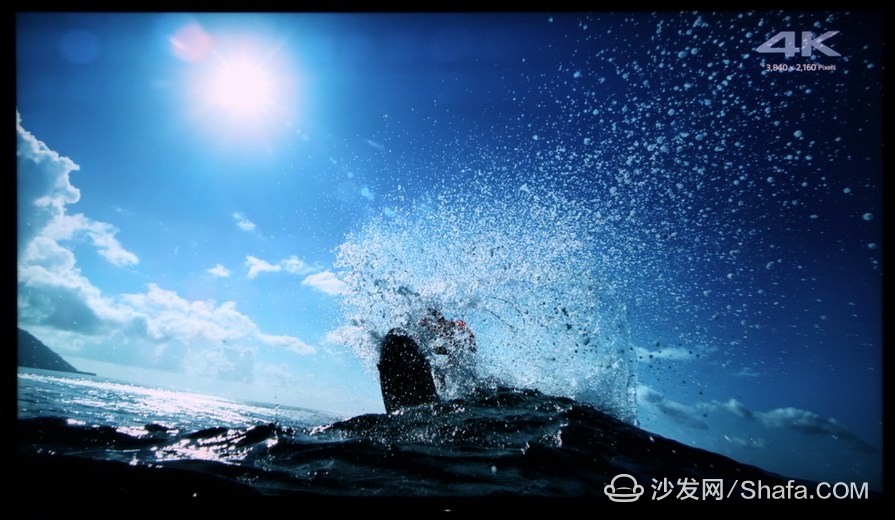
The five factors that affect image quality are: spatial resolution, temporal resolution, color gamut, brightness range, and grayscale range. To evaluate Z9D from these five dimensions, it not only has a balanced overall performance, but also has a high standard for each single item. Do not want to use too much vocabulary to praise the Z9D. I just want to suggest that AV lovers and HD enthusiasts have the opportunity to go to the store to see the true picture effect of the Z9D, because this TV can tell you that the highest level in the industry is now What is the picture quality?
Z9D picture performance summary
The Z9D has an impressive and memorable color expression. This is an exaggerated and contrived color style. It looks both pleasing and real. The Z9D can also accurately reproduce any subtle changes in color and light and shade, and can even respond to challenging scenes with great brightness contrast like active display devices. It is hard to imagine that it is essentially a Passive light-emitting LCD TV. The Z9D also retains Sony's quintessence in color tuning. It not only provides ordinary users with a wide range of professional-grade image mode choices, but also provides professional users with a high degree of freedom for personal tuning in the later stages. The overall performance is nearly perfect.
Z9D picture performance summary
The Z9D has an impressive and memorable color expression. This is an exaggerated and contrived color style. It looks both pleasing and real. The Z9D can also accurately reproduce any subtle changes in color and light and shade, and can even respond to challenging scenes with great brightness contrast like active display devices. It is hard to imagine that it is essentially a Passive light-emitting LCD TV. The Z9D also retains Sony's quintessence in color tuning. It not only provides ordinary users with a wide range of professional-grade image mode choices, but also provides professional users with a high degree of freedom for personal tuning in the later stages. The overall performance is nearly perfect.
The new Android system intelligence is no longer a short board

Compared to various "black technologies" in the picture quality, although the performance of the Z9D in smart functions has not been significantly ahead of this era, experience still remains the best system Sony has ever used. The Z9D uses Andriod TV6.0 platform which is specially adapted for large screens by Android, but it retains some features and habits of Sony since the XMB system in terms of UI style including manipulation, whether it is fluency or ease of use. In addition, compared to Samsung’s Tizen system and LG’s WebOS system, Android’s richness and extensibility performance will be even better. Z9D’s choice is also wise.
The number of APPs provided by the Z9D is not limited, and there are also some Sony-specific APPs, such as the Hi-res HD music app. In addition, due to the Android system, users can also install a variety of common third-party TV apps in the app store.

In terms of control, the Z9D's remote control is very traditional, but it also provides such a convenient function as voice search. In addition, the user can try to increase the linkage of the PS4 controller and project the screen of the mobile phone through the APP, which is equivalent to the performance of mainstream smart TVs in the market. On the video-on-demand service that many people are concerned about, the Z9D still uses the Wahiti TV broadcast control platform, but Sony does not have a random gift. If users want to watch the latest videos, they must pay for their own subscriptions. However, the Z9D uses the Android platform, users can also use the third-party video APP to achieve video on demand
Summary: The best 4K HDR TV
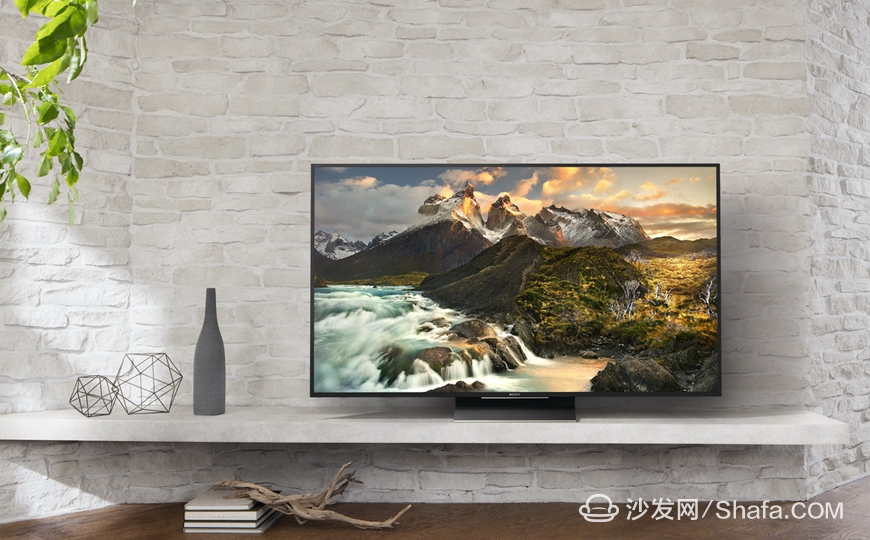
The appearance of the low-key Z9D is absolutely the most advanced image quality performance. The Sony Z9D has reached a level that is difficult to reach in general LCD TVs in every aspect of the quality of the picture, such as brightness reproduction range, smoothness of color gradation, detail definition of 4K images, and color expressiveness. Even with dark display effects, even noise reduction circuits and powerful backlighting systems have not lost the performance of OLED TVs with inherent advantages. After reading the Z9D's picture, the personal feeling is that the picture is very comfortable and balanced. Second, the picture has a sense of reality that is hard to describe in words. This feeling has never been experienced in other TVs.
Finally want to talk about the price of Z9D. When the listing price of Z9D was announced, someone spoke to be expensive. Indeed, the prices of 65å‹32999, 75å‹43,999 yuan are really too much more than those of the Internet brands 65-inch and 70-plus TVs that are just a few thousand pieces. And the appearance of the Z9D doesn't look cool at all. Here I just want to say that 1, the price of domestic Z9D is actually very kind, do not believe you look up its offer in the United States, on average more than 10,000 more expensive than domestic. 2, this price, absolutely worthy of its performance. In the end, I strongly recommend that you have a chance to visit the Z9D's real picture in the store. This TV can tell you what the highest level of quality in the industry is!
Minimalist & Understated Industrial Design Review Attitude No. 81: Sony Z9D

To be honest, the appearance of the Z9D is not a publicity. If it is not specifically stated, people who see it at first glance may not feel that it is a super flagship product that is positioned much higher than an ordinary TV. Because it doesn't have the elegance of curved lines on curved TVs, or the super-thin thickness of OLED TVs. Regardless of the width of the frame, the thickness of the screen, or even the style of the base, the Z9D can be said to be very simple, and there is no such feeling that people will feel suddenly bright. Said a real thing, a few days ago I went to the appliance store, into the Sony counter, after 30 seconds simply did not find which is the Z9D!
However, this does not mean that the Z9D is a product that does not pay much attention to design but only sells high prices based on image quality and sentiment.
Under the low-key and extremely simple appearance of the Z9D, it is the pursuit of various materials and processing techniques. For example, in its border part, in addition to using more textured metal, it also uses a golden color scheme that Sony rarely uses on television sets, revealing a hint of luxury in the main colors of dark gray. As for the appearance of the Z9D, what kind of process, what kind of material, and how many processes are used to create them, according to Sony's consistent style is not to be advocated to the outside world (if it is replaced with an Internet brand, most consumers will Has been brainwashed by various new terms, so we only need to feel through sight and touch. A good product can speak for itself.
At the same time, we can also find some very classic, Sony BRAVIA family elements under the minimalist look of the Z9D. For example, breathing lights that have never changed, suspensive pedestals, and even some old-fashioned multi-key remotes... all of these allow Sony’s old users to find the familiar feeling in the first place. Users also have the opportunity to experience the heritage of Sony's industrial design.
Sony's top flagship 4K HDR TV Z9D
Appearance & Details

The appearance of the Z9D is not unassuming. As a super flagship, it even looks a bit low-key.


The 65-inch and 75-inch Z9D looks very much like the previous high-end model X9300D. The 100-inch specification has a completely different appearance due to its large size.


The Z9D's frame has changed Sony's past styles, using the "local gold" that is known for its gas field. However, the meticulous craftsmanship and texture-rich materials have not been abandoned and have been completely preserved.

This black decorative line in the center of the frame is the finishing touch. Without it it is conceivable that even if the texture of the frame is prominent, it will make people feel mediocre and monotonous.

The golden border with a large area of ​​black and gray main colors is still quite classic.

As for what kind of craftsmanship, what kind of materials, how many processes to create them, according to Sony's consistent style will not be preached to the outside world.

Although the overall style is relatively low-key, the golden frame always gives people some visual stimulation and brings some extravagant feelings.

The style of the base is relatively traditional, but the choice of material is not sloppy, and the black metal brushed texture is very delicate and delicate.

Another purpose of this practical base is also to provide a stable support for heavy screen parts. Due to the adoption of a new backlight system, the weight of the Z9D is far more than that of a normal LCD TV.

Z9D body details

Z9D body details, back of the base close-up.

The terminal area on the back of the fuselage even has a protective cover, and all the cables can be concealed. The designer must be a Virgo.

The terminal area has even been designed with 3 cover plates, allowing the user to choose the minimum degree of exposure according to his own situation.

The outlet of the cable is cleverly designed on the back side of the base.

The Z9D's remote controller is not specifically customized, and is consistent with the high-end model X9300D X9400D.

And still is Sony's classic modeling remote control, but the cross navigation area becomes micro-keys, feel more clear and direct.

The back of the remote control material and the main material of the body echo one another.

Don't be fooled by the Z9D's unobtrusive appearance, because many of the dark technologies are hidden within its seemingly simple appearance. Let's continue reading.
Black technology must mention: BacklightMaster Drive


Although the word “black technology†has recently been overused, after thinking about it, it still feels that only using the term “black technology†can most accurately express my understanding of it.
First of all, the biggest breakthrough in the hardware part of the Z9D is the transformation of the LCD's key backlight structure: the new "Backlight Master Drive". The strength of this backlight is: 1, the use of ultra-high density direct matrix LED backlight (although in the end how many LED particles Sony does not explain, but from its performance will never be a small number, behind (There will be evidence); 2, it can achieve independent brightness and brightness control for each LED particle, and is based on real-time video signal control; 3, in order to prevent the light interference between the LED particles, specifically designed a The bundled structure allows each LED's light to shine only in the corresponding area.
Recalling the history of the development of LCD TVs, there have been products that have adopted direct-lit LED backlights, all of which have become a classic. However, in the traditional direct-type LED layout, in addition to the small number of LED particles, and due to the limitations of the backlight drive technology, the so-called dynamic backlight control can only be divided into a number of small areas in accordance with a certain area of ​​the backlight control, ranging from a few, if It is already possible to achieve dozens or even hundreds of districts, and the Z9D can do it. In the past, no opponent has ever appeared.
I had seen the power of Dynamic Backlight System - Master Edition at CES this year: At that time, Sony placed two master LCDs with dynamic backlight system side by side, but one of them removed the liquid crystal layer, leaving only the backlight system. In this way, people can intuitively see the working status of the backlight when the television is displaying various screens. The effect is indeed very shocking, because it looks like watching a black and white TV screen with a slightly lower resolution, and the accuracy of its backlight is evident. And another advantage of this high-density LED layout is that it allows brighter parts of the image to achieve higher brightness, which is why the Z9D's HDR performance far exceeds the average HDR TV.


In addition to the extremely precise and subtle control of the backlight area, this new backlighting system also allows the Z9D to have a brighter and lighter brightness reproduction range that surpasses that of ordinary HDR televisions. In fact, at the time of demonstrating the "BacklightMaster Drive" technology prototype at CES, Sony said that it was already possible to achieve screen brightness of up to 4,000 nits (although the highest-end HDR TV on the market is currently available.) 1000 nits peak brightness already belongs to high-performance models). Although Sony has not yet announced the Z9D's highest brightness index, it is certainly beyond the mainstream HDR TV. The Z9D has a display capability that is closer to the real-world brightness range at the physical level, which is also hard to reach for so-called HDR TVs that only process HDR signals.
Three new feature-capable X1 Extreme chips


Another comparison of the Z9D has been neglected, but the technology that plays a role in no less than the importance of the backlight system is the integration of the three new technologies of “HDR dynamic item-by-item remodeling technology, dual image database, and SuperBitMapping 4K HDRâ€. "4K HDR image processing engine".
First of all, let's talk about the real thing of this image engine in the physical layer, which is the X1 Extreme chip. Unlike other color TV manufacturers' X-core CPUs and nuclear GPUs, the X1 Extreme is a chip that is completely used for image quality processing, and has nothing to do with those running points. This chip is entirely owned by Sony itself and is neither sold nor authorized. We only know that its computing power is 1.4 times that of current X1 chips used in high-end machines.
X1 Extreme's computing power is not used to run points. It is entirely for processing images. Therefore, it can achieve frame-by-frame processing of 4K resolution video signals.
The first new technology: "HDR dynamic item-by-item reshaping technology" can detect and analyze each object in the frame frame by frame and give the best optimization algorithm. After optimizing the details in each frame of the image, the image engine performs HDR shading adjustment according to the overall contrast of the frame. After two rounds of optimized remodeling, the image shows not only the light and darkness of the detail part is more true, but also can show more excellent light and shadow effects and contrast of light and shade, gradual change of light intensity and even halo performance at the overall macro level. It is difficult to achieve on ordinary HDR TV.
The second new technology "Dual Image Database" is one of the souls of Sony's image processing technology and is mainly used for noise reduction. Compared with Sony's past noise reduction technology, this technology can realize the recognition of different elements in the image such as foreground and background, and compares and reduces noise through a huge image database. In fact, on the Z9D launch event, many people have seen the difference between the noise reduction effects of the ZQD and the mainstream QD TVs and OLED TVs on the market. The effect even exceeds the OLED TVs known for their darkness. The reason is that OLED TVs are In the absence of high-performance noise reduction processing technology, it is easy to display noise as a video signal, which affects the performance of the dark part.
The third new technology is a 4K HDR 14-bit smooth gradient. Many people have had the experience of seeing a noticeable color gamut on the screen of a television screen. The main reason is not that the color expression of the screen is not enough, but the lack of color management capabilities behind it. The 4K HDR 14-bit Smooth Gradient Technology analyzes the image frame by frame and performs 14-bit smoothing of the image to fully optimize the gradation and achieve a lower gradation, which means a more natural color transition.
Z9D picture quality performance test

The Z9D does not advertise the use of quantum dots, but this does not mean that its color is not as good as quantum dots. The new backlight system achieves a wider range of brightness reproduction, which means that the Z9D's true color reproduction will also be enhanced: because the same color gives us a different subjective experience at different brightness levels, the brightness reproduction range The bigger the color, the better the trueness and accuracy.

Z9D can reproduce very subtle color changes, while the color style is very real, there will be no intention to enhance the sense of saturation

Subtle changes in light and shade can be accurately reproduced.

Subtle changes in light and shade can be accurately reproduced.

Subtle changes in light and color, combined with a high-performance image engine, make it possible to see very clear details even when viewing the picture at close range, and the three-dimensionality of the picture is also very strong.

In addition to the powerful noise reduction capability of the new image engine, the 14-bit smoothing process also makes the color transition extremely smooth.

Color changes, transitions, and details of the details are excellent.

The Z9D's image engine intelligently analyzes the details of each frame in the image. After HDR optimization of the details, HDR optimization is performed from the global level. Therefore, the final screen effect does not appear to be distorted because the details are too prominent. problem.

Pay attention to the sharpness of the detail lines and the level reproduction of the dark parts of the details. This is the effect seen 20 cm from the screen.

The Z9D's image engine intelligently analyzes the details of each frame in the image. After HDR optimization of the details, HDR optimization is performed from the global level. Therefore, the final screen effect does not appear to be distorted because the details are too prominent. problem.

Pay attention to the sharpness and color change of the dog's hair edge. Note that this is an effect seen only 20 cm away from the screen.

Sony has not announced the Z9D's peak brightness yet, but at CES2016, Sony has stated that "BacklightMaster Drive (Dynamic Backlight System - Master Edition)" can achieve brightness of up to 4000 nits.

This is the scene at the CES 2016 when Sony demonstrated "BacklightMaster Drive (Master Edition)". You can see how its backlighting system works, and also how dense the LED particles are. Is a small black and white LED display.

In addition, because the LED density is very high, when a bright part is displayed, multiple LEDs can emit light in a concentrated manner to achieve a high brightness performance in a very small area.

Since the LEDs are densely arranged right behind the liquid crystal panel layer, such a highly precise area control can be realized.

Therefore, the problem of leakage of light and black on pure LCD TVs is not pure or profound. It is not a problem on the Z9D. Even if the screen has both bright and dark parts, no interference will occur.

This is a side view that we often use to test backlight uniformity and light leakage. The actual Z9D picture we see is exactly the same as the screen shot result. In addition to the weak LOGO breathing light just below, the area outside the white font is black.

The black level test chart, Z9D perfect reproduction of the tiny color change.

In the same way, the white part color scale is also a perfect reproduction. This kind of performance usually only appears on active light display devices.

Let's take a look at some video observations with high contrast. This is a global screen shot. Since the brightness and darkness in the screen are very large, the general camera cannot capture real effects from the global level. Therefore, this screen shot is not the actual performance of the Z9D. We only use it. It refers to the location of the detailed effect below.

In the neon part, the actual display effect of the Z9D is this.

The darkest part on the right can actually see a lot of detail.

Change to another section with a highly bright area and notice the left area on the screen shot

In fact, you can see that the highlights have not lost any details, and the color changes are also great

When there are large bright areas and large dark areas at the same time, the Z9D still restores all parts of the image. Also due to camera latitude problems, this global screen shot is only used as a reference for the following detail position.

The details of the bright part, the texture of the wall is clear and three-dimensional, which is the effect of viewing with the naked eye 20 cm away from the screen.

Personally think that the Z9D has some visual impact that other TVs can hardly compare when displaying some black-and-white images. The effect of detailed light and shadow changes is unforgettable.

However, the Z9D's image always gives people a very real feeling, even if there are some bright color blocks in the picture, but it will not make people feel over-exaggerated sense of intent.
The peak brightness of the Z9D is still a mystery, but this does not prevent it from having an excellent ultra-high brightness reproduction range.

Another major feature of Sony TVs is the extremely freedom of manual tuning. The Z9D also retains this tradition. Color, light, darkness, clarity... The audio space for audiophiles and HD enthusiasts is very large.

For ordinary users, the Z9D's preset multiple image modes are also far more common than ordinary televisions, including professional theater modes and general home theater modes, which are not present on conventional televisions.

These image modes after being tuned by professional video engineers are also the essence of Sony TVs. Don't miss it.

Our tests this time are based on the default standard image mode.
Even in the bright mode, the Z9D will not be as saturated or overly saturated as the average TV set.

The five factors that affect image quality are: spatial resolution, temporal resolution, color gamut, brightness range, and grayscale range. To evaluate Z9D from these five dimensions, it not only has a balanced overall performance, but also has a high standard for each single item. Do not want to use too much vocabulary to praise the Z9D. I just want to suggest that AV lovers and HD enthusiasts have the opportunity to go to the store to see the true picture effect of the Z9D, because this TV can tell you that the highest level in the industry is now What is the picture quality?
Z9D picture performance summary
The Z9D has an impressive and memorable color expression. This is an exaggerated and contrived color style. It looks both pleasing and real. The Z9D can also accurately reproduce any subtle changes in color and light and shade, and can even respond to challenging scenes with great brightness contrast like active display devices. It is hard to imagine that it is essentially a Passive light-emitting LCD TV. The Z9D also retains Sony's quintessence in color tuning. It not only provides ordinary users with a wide range of professional-grade image mode choices, but also provides professional users with a high degree of freedom for personal tuning in the later stages. The overall performance is nearly perfect.
Z9D picture performance summary
The Z9D has an impressive and memorable color expression. This is an exaggerated and contrived color style. It looks both pleasing and real. The Z9D can also accurately reproduce any subtle changes in color and light and shade, and can even respond to challenging scenes with great brightness contrast like active display devices. It is hard to imagine that it is essentially a Passive light-emitting LCD TV. The Z9D also retains Sony's quintessence in color tuning. It not only provides ordinary users with a wide range of professional-grade image mode choices, but also provides professional users with a high degree of freedom for personal tuning in the later stages. The overall performance is nearly perfect.
The new Android system intelligence is no longer a short board

Compared to various "black technologies" in the picture quality, although the performance of the Z9D in smart functions has not been significantly ahead of this era, experience still remains the best system Sony has ever used. The Z9D uses Andriod TV6.0 platform which is specially adapted for large screens by Android, but it retains some features and habits of Sony since the XMB system in terms of UI style including manipulation, whether it is fluency or ease of use. In addition, compared to Samsung’s Tizen system and LG’s WebOS system, Android’s richness and extensibility performance will be even better. Z9D’s choice is also wise.
The number of APPs provided by the Z9D is not limited, and there are also some Sony-specific APPs, such as the Hi-res HD music app. In addition, due to the Android system, users can also install a variety of common third-party TV apps in the app store.

In terms of control, the Z9D's remote control is very traditional, but it also provides such a convenient function as voice search. In addition, the user can try to increase the linkage of the PS4 controller and project the screen of the mobile phone through the APP, which is equivalent to the performance of mainstream smart TVs in the market. On the video-on-demand service that many people are concerned about, the Z9D still uses the Wahiti TV broadcast control platform, but Sony does not have a random gift. If users want to watch the latest videos, they must pay for their own subscriptions. However, the Z9D uses the Android platform, users can also use the third-party video APP to achieve video on demand
Summary: The best 4K HDR TV

The appearance of the low-key Z9D is absolutely the most advanced image quality performance. The Sony Z9D has reached a level that is difficult to reach in general LCD TVs in every aspect of the quality of the picture, such as brightness reproduction range, smoothness of color gradation, detail definition of 4K images, and color expressiveness. Even with dark display effects, even noise reduction circuits and powerful backlighting systems have not lost the performance of OLED TVs with inherent advantages. After reading the Z9D's picture, the personal feeling is that the picture is very comfortable and balanced. Second, the picture has a sense of reality that is hard to describe in words. This feeling has never been experienced in other TVs.
Finally want to talk about the price of Z9D. When the listing price of Z9D was announced, someone spoke to be expensive. Indeed, the prices of 65å‹32999, 75å‹43,999 yuan are really too much more than those of the Internet brands 65-inch and 70-plus TVs that are just a few thousand pieces. And the appearance of the Z9D doesn't look cool at all. Here I just want to say that 1, the price of domestic Z9D is actually very kind, do not believe you look up its offer in the United States, on average more than 10,000 more expensive than domestic. 2, this price, absolutely worthy of its performance. In the end, I strongly recommend that you have a chance to visit the Z9D's real picture in the store. This TV can tell you what the highest level of quality in the industry is!
Smart TV/box information can focus on smart TV information network sofa butler (http://), China's influential TV box and smart TV website, providing information, communication, TV boxes, smart TVs, smart TV software, etc. Answering questions.
Yaskawa SGM7J Type Servo Motor
Yaskawa Rotary servo motor SGM7J
SGM7J YASAKAWA
Wuxi Trenty Machinery & Equipment Co., Ltd. , https://www.elec-inverter.com